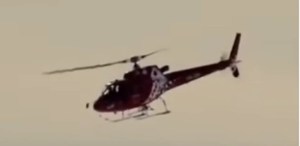Continued from Part 1
Till now, we have seen that Rajendra Singh Rathore is summoned to a secret meeting with Wing Commander Pawan Singhal. Given a mission to go to the Amritsar-Atari border with an army unit, Rajendra is handed a white envelope containing instructions. At the checkpoint, he joins an army convoy, and camaraderie forms with the soldiers, particularly with Keshav Tiwari.
Upon reaching the border, a platoon of 35 soldiers, led by Subedar Jagjeet Singh Saini, sets up camp. While tensions rise at the border due to escalating conflict in Kargil, named as the Kargil war and Rajendra is given significant responsibilities, impressing Subedar Jagjeet Singh Saini. The situation suggests a brewing crisis at the India-Pakistan Line of Control (LOC). Actually, when we try to find out why the Kargil war started, the reason behind this is that, according to www.brookings.edu, the U.S. determined that Pakistan had deliberately violated the Line of Control near Kargil, and Clinton did not hesitate to blame Pakistan for risking a broader war. For the first time, an American administration was siding publicly with India against Pakistani aggression.
and now further…..
That night, during dinner with everyone, Subedar Jagjeet Singh Saini praised Rajendra Singh Rathore, “Brother, I had heard that Air Force soldiers are smart, and today I have seen it.”
A little later, Subedar received a message on the wireless, so he called everyone together and said, “There has been some activity on the other side of our border today, so we’ll be on high alert. He ordered the soldiers named Ram Singh, Mahesh to form groups of four soldiers each and dig trenches. One group will dig the trench in the north and another in the west. Subedar ordered to make the trenches at least five feet deep. Other responsibilities were also assigned by Subedar and Keshav started preparing machine guns with three other soldiers.
Rajendra Singh Rathore asked, “What’s happening? Why are we preparing the machine guns?” Keshav replied, “We’re on high alert now. It means all the guns are ready, all the soldiers are ready, trenches are prepared in the ground, and we’re ready to hit the enemy anytime. News of activity across the border has come in. Now, let these Pakistanis come; if we don’t kill them, my name is not Keshav.” Upon hearing this, Rajendra Singh Rathore’s face turned red with patriotism. He began to tremble with excitement, his arms flailing, and tears welled up in his eyes. He said, “I am also going to be on the front lines with you.”
Just then, Subedar arrived and said, “I know, Rajendra Singh Rathore, you’re an honest Air Force soldier. You’ve been sent here for a special task. You’re an expert in identifying the take-off of aircraft from radar machines.

Come with me.” The Subedar’s words were cut short as a gunshot was heard from across the border. The bullet grazed Rajendra Singh Rathore’s ear, and a bulb in front of him burst into flames. The Subedar grabbed Rajendra Singh and pushed him to the ground, shouting, “Take charge of the post!” He signaled Rajendra Singh Rathore to go to the control room. Everyone hit the ground, taking their positions. Jagjeet Singh and Rajendra Singh Rathore both entered the control room vehicle. Rajendra Singh Rathore turned on the radar machine and focused his eyes on the RADAR Console. He thought that tonight might be the last night of his life. Death had just brushed past him. If the bullet had been one inch closer, the game would have been over.

Rajendra Singh Rathore and Subedar Jagjeet Singh Saini were diligently working on the radar machine. Outside, there was silence, with only the rustling of leaves breaking the stillness of the night. Around 2:00 AM, Rajendra Singh Rathore noticed some activity on the radar. He observed it closely and calculated, then turned to look at Subedar Jagjeet Singh. Rajendra Singh Rathore said, “Sir, this seems to be a helicopter. It’s about 15 kilometers inside the Pakistani border, and at its current speed, it will be right above us in the next 6 minutes.”
Without delay, Subedar Jagjeet Singh sent this information to the Amritsar headquarters via wireless. Afterward, within two minutes, he alerted everyone. A blackout siren rang, and all lights were extinguished.

Exactly 6 minutes later, a Pakistani helicopter was seen flying at an altitude of about 200 feet above the ground, inside Indian Territory. The helicopter had a powerful searchlight, illuminating the ground clearly. Wherever the light went, the surroundings were visible. The Subedar, coming out of the vehicle, shouted, “Prepare all machine guns!” Mahesh, Ram Singh, Keshav, and all 35 soldiers quickly made their machine guns ready. Simultaneously, Jagjeet issued another order, “Keshav and Thomas, both of you target the helicopter with heavy machine guns. Fire as soon as anyone gets off.” Subedar Jagjeet Singh had the suspicion that Pakistani commandos or militants might try to land terrorists via helicopter and destroy the radar.
Rajendra Singh Rathore couldn’t help but feel a tremendous sense of pride as he watched the entire scene unfold. He no longer cared whether he would survive this night or not; today, it was his turn to do something for his country. His self-confidence seemed to have multiplied a hundredfold.
Talking with Keshav, Rajendra Singh Rathore had been told that they had enough ammunition that even if a thousand Pakistanis came, their 35-man platoon was capable of annihilating them. All the vehicles and soldiers were concealed so effectively with camouflage that nothing could be discerned. This military technique, known as camouflage, was used during wartime.

Meanwhile, the sound of a fast-approaching fighter jet became audible. The helicopter had now moved rapidly in a different direction. The roar of the fighter jet grew louder and louder. The helicopter had veered far away from them.

Pingback: Patriotism or Sacrifice: 1999 Kargil War's True Story (Part 1) - Stories Founder